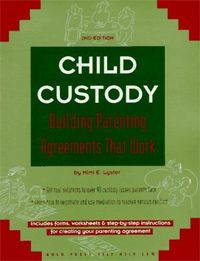Divorce: Division of Property and Custody
Dividing family assets, liabilities and other property can be tricky. Not only do you have to list everything along with its current market value (current as of the time of the original filing), but what you also have to keep track of what you owe on it. A new car that you purchased for $15,000 two years ago may only be worth $10,000 today, and you may still owe a balance of $9,000. It's a complicated process.
Also, there is marital property and nonmarital property. Anything that you owned before the marriage is nonmarital property and stays with you (or you could negotiate if your spouse wants it). Gifts you were given by your spouse, such as an engagement ring or a plasma television, remain with you and aren't considered marital property, either.
Advertisement
One way some people begin the process of dividing marital property is to come up with a list and divide it by:
- What they really want
- What they would like to have
- What they don't care about
- What their spouse really wants
- What their spouse would like to have
- What their spouse doesn't care about
Then, there are monetary assets such as equity in a house, bank accounts, stocks, retirement accounts, life insurance and other joint assets. In the case of retirement accounts, the current value is the value if you were retiring today.
Add to that debts such as car loans, mortgages, credit card balances (as of the filing) and other debts, and a picture of the total assets becomes more clear. How to divide it may still be fuzzy, and that's where the negotiations are important. The courts have forms for you to fill out where you list everything and calculate total assets. Some couples close or freeze joint accounts and keep track of debts paid or accrued during the separation in order to keep the list of assets current.
Child Custody
When children are involved, you must file a custody petition. This is separate from the divorce filing itself, but since both fall under the jurisdiction of family court, you can usually handle both at the same time. When you're discussing custody, the best interest of the child should always be the driving force for decisions. Thinking about things like not moving children from the school they attend and the friends they have is very important. Additionally, questions such as which parent has the most time to spend with the child and which parent has family close by often provide decision-making points. The parent who has been the primary caregiver often gets a greater custody role.
Sole custody means one parent has both physical custody and legal custody. Legal custody entails the right to make decisions regarding the upbringing of the child. When sole custody is awarded, the non-custodial parent usually gets regular visitation rights.
Joint custody allows both parents to have a say in the child's upbringing. This type of custody can be further divided into joint physical custody (the child lives with both parents at different times) and joint legal custody (both parents have equal say in decisions regarding the child). In this type of custody, it is possible for a judge to grant sole physical custody and joint legal custody or vice versa.
There is also divided custody or alternating custody, which means the parents split the time the child is physically with them and share legal custody for decision making.
Occasionally, families with more than one child will give one parent custody of one child and the other parent custody of the other child. This is usually known as split custody and is uncommon.
Next, we'll look at child support and alimony.
